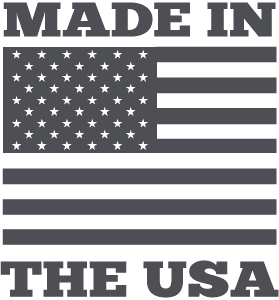Difficult posterior restoration by Dr. Arthur R. Volker
Posted on February 25 2025
Introduction
This case was completed by Dr. Arthur R. Volker of DentCare Dental Center in Sunnyside, NY.
The need for isolation is of primary importance for the execution of high-level operative dental procedures. This article, featured in the February 2025 issue of Dentaltown Magazine, demonstrates the restoration of a large multi-surface direct composite restoration which was facilitated using an Isolite Pro (Zyris) isolation system.
Methods of isolation
Cotton rolls are often the quickest and least costly option for isolation. They can provide isolation and can be effective, especially in primary molars. Issues arise if the rolls become saturated with fluid, as excess can then leak and contaminate the operative field. Rolls may also need to be replaced frequently during a procedure, which can also result in contamination of the field.
Rubber dams are considered the gold standard for isolation. They provide isolation from crevicular fluids. By using proper inversion techniques in conjunction with a heavy dam, papillary tissue can be retracted, allowing better access and visualization of subgingival areas. This is useful in procedures where the interproximal emergence profile of the tooth needs to be altered, such as in a diastema closure or a black triangle resolution. There can be a potential for an allergic reaction with the use of a latex dam. It is recommended that a non-latex option be used.
Isolite Pro, attached to a dedicated suction line, provides isolation, illumination, visualization and suction in a single-use mouthpiece. Additionally, it provides a mouth prop to the patient and acts as an airway protector. The Isolite demonstrates less leakage than cotton roll isolation and is more comfortable than rubber dam isolation.
Case presentation
The patient, a 63-year-old woman in good general health, presented with a complaint of a “chipped tooth” on the upper right. A periapical film of the area was taken (Fig. 1). An examination revealed a mesio-occlusal-palatal fracture of tooth #2 with caries (Fig. 2). The patient was made aware of treatment options, including the possibility of root canal and full coverage. It was decided to attempt a direct restoration on tooth #2.
Clinical Case Spotlight: Using the Isolite Pro for a Difficult Posterior Restoration

Fig. 1: Pre-operative periapical radiograph.

Fig. 2: Pre-operative clinical presentation.
The patient was anesthetized with 3% mepivacaine. A small Isolite mouthpiece was placed. Caries excavation was initiated with a carbide round bur (Fig. 3) and caries indicator (Snoop, Pulpdent). Though deep, no pulpal exposure was noted. During the excavation process, caries were present subgingivally, resulting in bleeding from the area (Fig. 4). At this point, a rubber dam clamp was to be placed. However, the short inciso-gingival height of the tooth as well as the extent of the cavity preparation precluded placement of the clamp. It was then decided to place a Greater Curve matrix band (Greater Curve) in a Tofflemeyer retainer with a wooden wedge. Once hemostasis was obtained, a liner (Activa, Pulpdent) was placed over the deepest dentinal areas (Fig. 5).

Fig.3: Caries excavation with a round bur.

Fig.4: Bleeding from subgingival preparation.

Fig.5: Placement of RMGI liner and Greater Curve matrix band with wedge positioned.
Using a total-etch protocol, the area was first conditioned with phosphoric acid, and a bonding agent was placed (Fig. 6). A dual cure restorative material (Anchor, Apex Dental) was placed in a single increment to fill the remainder of the cavity (Fig. 7). The Anchor was adapted with a hand instrument (Fig. 8) and cured. Excess material was removed with rotary instruments (Fig. 9). Occlusion and contacts were verified. Figure 10 demonstrates the final restoration, and Figure 11 shows the post-operative radiograph.

Fig.6: Placement of bonding agent. |

Fig.7: Filling of cavity with Anchor. |

Fig.8: Adapting Anchor with a hand instrument |

Fig.9: Trimming excess material |

Fig.10: Completed restoration. |

Fig.11: Post-operative radiograph. |
Conclusion
There are multiple methods for isolation available to the clinician. In areas where a rubber dam clamp may be untenable, such as in a multi-surface Class II on a terminal tooth—especially if the tooth is short and cannot hold a clamp—or if the clamp interferes with the restorative matrix, the Isolite Pro can help facilitate a predictable outcome.




Connect